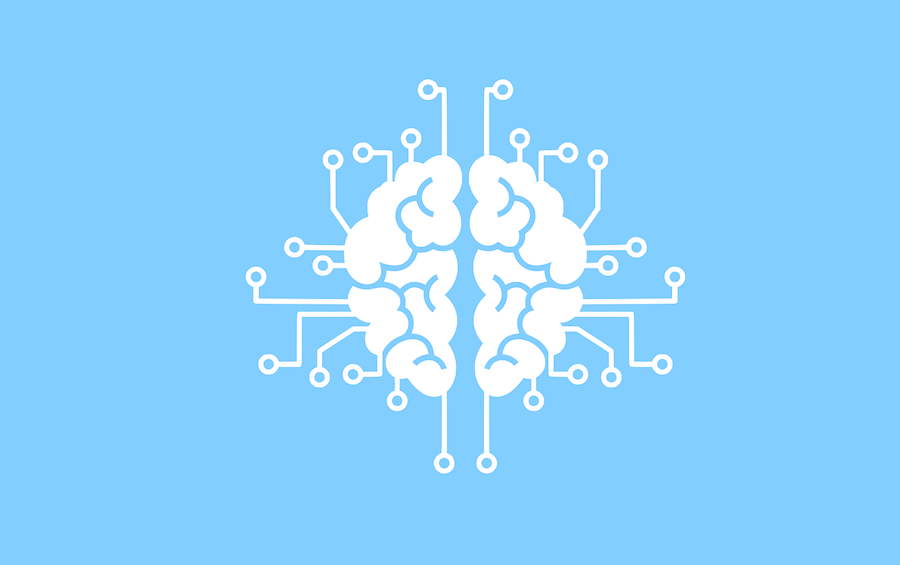

TinyML_Bringing Machine Learning to the Edge
TinyML is bringing machine learning to the edge using devices with tiny, low-power microcontrollers. Here’s how.


Machine learning is exploding. New models, new algorithms, and new applications are popping up every day. According to the Organization for Economic Cooperation and Development (OECD), in 2020 alone, more than $75 billion was invested in artificial intelligence (AI), up from $3billion in 2012. Most of that funding went toward machine learning research and development.
Machine learning consists of repetitive arithmetic operations, makes heavy use of linear algebra, and is traditionally performed on servers or the cloud by high-powered computers. But what if you could perform complex machine learning tasks off the premises but close by, using less powerful computing devices? That would make it possible for businesses to apply AI at the edge without needing massive data centers.
TinyML is bringing machine learning to the edge using devices with tiny, low-power microcontrollers.
Tiny Machine Learning (TinyML) is a discipline at the crossroads of machine learning (ML) and embedded systems that allows you to run ML models on low-power microcontrollers.
Embedded systems are primarily composed of hardware and software that are designed to perform a particular function. They are computers, but in contrast to general-purpose computers, such as PCs, cellphones, or tablets, they focus on specific operations. Examples of embedded systems include printers, home appliances, digital cameras, electronic calculators, ATMs, and more.
Microcontrollers are tiny chips that can run on very little power—often with only a few kilobytes of memory and sometimes even without an operating system—and constitute the hardware portion of embedded systems, enabling them to perform their tasks.
Some of the features of microcontrollers include:
The origin of TinyML can be traced back to 2014. Pete Warden, a Google staff research engineer, is credited by his peers as the originator and early influencer of the TinyML subdomain of machine learning.
Also read: Effectively Implementing AI as a Service
In a world where ML is rapidly gaining popularity and use, the ability to apply it at the edge becomes more important. While big cloud providers like Microsoft Azure, Amazon AWS, and Google Cloud are creating data centers with thousands of servers running ML models in parallel over huge datasets, TinyML offers the ability to implement just one or two devices that can perform simple tasks based on a company’s needs. For example:
A smart home appliance company wants its appliances to automatically adjust power consumption based on real-time price fluctuations of electricity, but they don’t want to invest millions into building an expensive data center for all their appliances. Instead, they could embed TinyML algorithms onto each device to independently learn how much power needs to be reduced given its current state (e.g., what time of day and how much energy is consumed by other appliances in the house).
A car manufacturer wants to use its fleet of self-driving cars for a ride-sharing service, but it doesn’t want to invest in full autonomy at this point because not enough people will be able to benefit from it. So instead, they can embed TinyML algorithms onto their vehicles so that each one acts independently using pattern detection based on data collected from previous trips (e.g., speed limits and traffic patterns).
In both cases, these companies would save millions in building expensive infrastructures when only small devices are needed—allowing them to focus on developing new features instead.
Edge computing refers to the process of moving cloud computing closer to users for them to benefit from faster response times. The idea is that you can avoid sending all your data back and forth through the internet when only a small part of it needs immediate attention.
TinyML has found ways to give devices an autonomous edge by running ML algorithms on each device without uploading anything beyond what’s necessary. This allows TinyML-powered devices to not only perform better but also require much less power than if they were connected directly into centralized servers with big datasets, saving money and time while improving user experience.
Also read: Micro Data Centers are Evolving the Edge
There are many benefits to using TinyML over centralized cloud-based systems, including:
While the benefits of using machine learning at the edge are clear, there are still some limitations that companies must be aware of before they can effectively adopt this technology.
TinyML is impactful for IT teams looking to improve their organization’s networking capabilities, security, and data privacy. Some of the industries that can benefit from TinyML include:
TinyML is a promising technology that has many benefits for organizations looking to take advantage of smart devices at the edge. Several ML frameworks support TinyML applications. Some of the most popular platforms include TensorFlow, PyTorch Mobile, and Edge Impulse.
As the Internet of Things (IoT) continues to expand, many companies are looking for ways to use machine learning at the edge to analyze data collected from smart devices. As a result, there is increasing interest in developing tools that can help streamline this process without compromising accuracy or security.
Read next: AI-Driven ITSM is Transforming IT Management


Kihara Kimachia is a writer and digital marketing consultant with over a decade of experience covering issues in emerging technology and innovation. In addition to appearing regularly in Enterprise Networking Planet, his work has been published in many leading technology publications, including TechRepublic, eSecurity Planet, Server Watch, Channel Insider, IT Business Edge, and Enterprise Storage Forum.

Enterprise Networking Planet aims to educate and assist IT administrators in building strong network infrastructures for their enterprise companies. Enterprise Networking Planet contributors write about relevant and useful topics on the cutting edge of enterprise networking based on years of personal experience in the field.
Property of TechnologyAdvice. © 2025 TechnologyAdvice. All Rights Reserved
Advertiser Disclosure: Some of the products that appear on this site are from companies from which TechnologyAdvice receives compensation. This compensation may impact how and where products appear on this site including, for example, the order in which they appear. TechnologyAdvice does not include all companies or all types of products available in the marketplace.